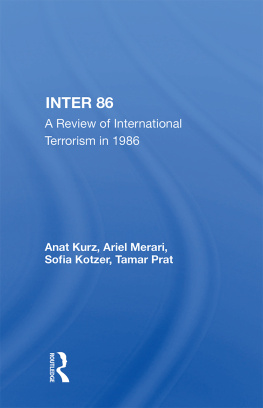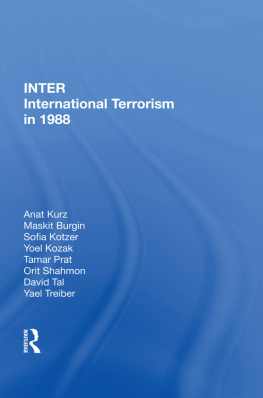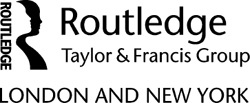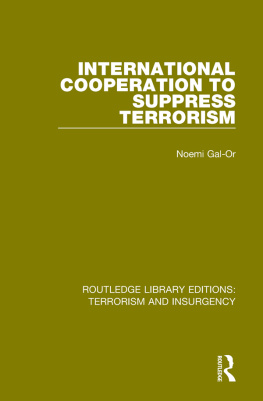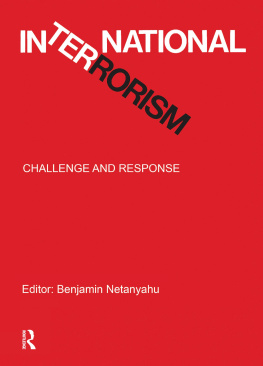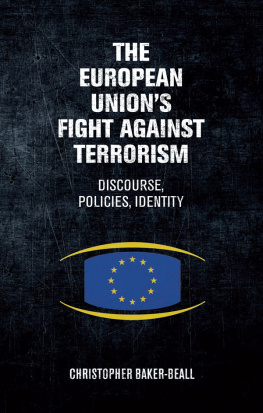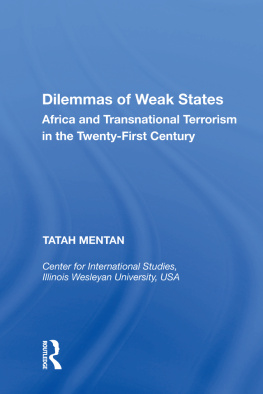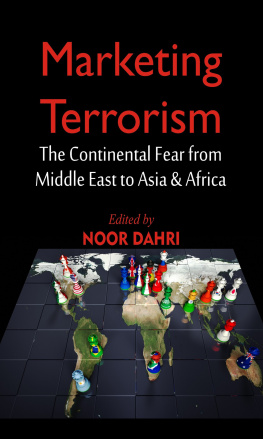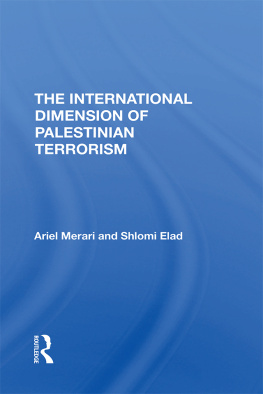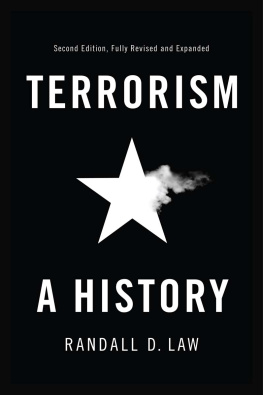Inter 86
A Review of International Terrorism in 1986
Anat Kurz , Ariel Merari , Sofia Kotzer , Tamar Prat .
JCSS Project on Terrorism
First published 1987 by Westview Press
Published 2018 by Routledge
52 Vanderbilt Avenue, New York, NY 10017
2 Park Square, Milton Park, Abingdon, Oxon OX14 4RN
Routledge is an imprint of the Taylor & Francis Group, an informa business
Copyright 1987 Tel Aviv University Jaffee Center for Strategic Studies
All rights reserved. No part of this book may be reprinted or reproduced or utilised in any form or by any electronic, mechanical, or other means, now known or hereafter invented, including photocopying and recording, or in any information storage or retrieval system, without permission in writing from the publishers.
Notice:
Product or corporate names may be trademarks or registered trademarks, and are used only for identification and explanation without intent to infringe.
ISBN 13: 978-0-367-00698-3 (hbk)
Table of Contents
, by Anat Kurz and Ariel Merari
, by Ariel Merari
, by Ariel Merari
, by Tamar Prat
, by Anat Kurz
, by Anat Kurz
, by Sophia Kotzer
Guide
Acknowledgements
Publishing a survey summarizing the recent year is inherently a problematic task. On the one hand, the work has to be done rapidly, so as to remain relevant and timely. On the other hand, a survey of this kind necessitates some distance in time, in order to gain more complete information and to allow for data assessment and scrutiny. The result of these conflicting demands is always a compromise. The fact that we were able to publish this report, imperfect as it may be, in a relatively short period of time after the end of 1986, is due to the efforts and skills of many persons. The JCSS Information Center, under the direction of Moshe Grundman, made a special effort to clip and distribute data on terrorism-related events in real time to enable their processing for InTer 1986. In addition to the authors credited, at the Project on Terrorism Yael Treiber, David Tal and Yoram Schweitzer analyzed raw data, while Orit Zilka, Talia Bentwitch and Yoel Kozak mounted the information on computer. Doron Bal, who had a central role in developing the computer program, has continued to improve it. Miriam Cassuto and Ziva Baron wordprocessed reports. Joseph Alpher, the JCSS Deputy Head and Executive Editor, made an indispensable contribution in streamlining the survey and preparing it for printing.
Ariel Merari
Director, Project on Terrorism
This report surveys international terrorism in 1986. It is the third annual survey of its kind published by the Jaffee Center for Strategic Studies' Project on Terrorism. As in previous years' reports, the current survey contains statistical data which delineate various aspects of international terrorism, as well as brief articles which analyze major current issues in international terrorism. This year the articles include a discussion of western states' policies on terrorism, an article on the use of and support for terrorism by Middle Eastern states, and an analysis of trends in Palestinian terrorism. A chronology of significant international terrorist events in 1986 is included, as well as extensive tables and a glossary of terrorist organizations.
The report is based on data collected, collated and computerized at the JCSS Project on Terrorism. That project was established in 1979. Its aims are to maintain a data base on terrorism around the world, to issue periodic situation reports, and to conduct studies analyzing the processes, trends and phenomena of terrorism.
The JCSS terrorism data base contains three files:
Terrorist Events -a systematic cataloguing of international as well as domestic terrorist incidents that take place in most parts of the world;
Terrorist Groups -a continually updated collection of information on terrorist groups around the world, according to a predetermined list of detailed categories;
Countries' Attitudes to Terrorism -monitors and documents the various forms of state support for terrorist groups, as well as the methods states use to combat terrorism.
For purposes of data collection, a terrorist group is defined as an organization other than a state (although it may enjoy state support and\or act in the service of a state) which resorts to the systematic use of violence in order to achieve political ends. A terrorist incident is any violent activity conducted by a non-state organization in order to attain political objectives. An international terrorist incident (in contrast to a domestic incident) is defined as a terrorist incident which in some way involves more than one state. In addition to these categories, the JCSS data base monitors international terrorist activity conducted by direct emissaries of states on foreign territory--like the Libyan hit teams.
The data base relies mainly on information from the mass communications media (primarily dailies, weeklies and periodicals), professional publications, and government releases. Media information concerning terrorism is problematic for two reasons: first, coverage of events, especially those taking place in remote parts of the world, is sometimes deficient--although international terrorist incidents are generally covered better than domestic ones, and terrorist activity involving western interests receives particularly good coverage. The second point is related to the clandestine nature of terrorist activity. Information about the actual perpetrators and their intentions is sometimes incomplete, contradictory or simply absent. However, there is usually no doubt regarding the physical results of an incident.
As mentioned above, international terrorist incidents are defined as those events in which more than one country is involved. Nevertheless, in the present report, as in the previous ones, we excluded incidents that formed part of an underground struggle conducted by rebels against a foreign army in their own country. Inclusion of violent events associated with struggles of this sort would considerably distort the picture of international terrorism. Thus, statistics in this report do not contain attacks on the IDF in Lebanon, events in the struggle conducted by the local population against the Vietnamese army in Cambodia, clashes between Afghan rebels and Soviet units, events involving French or Libyan units within the context of the civil war in Chad, etc.
A total of 437 international terrorist incidents were recorded in 1986, an increase of seven percent compared to the 408 incidents of the previous year, and 6 percent more than in 1984. In terms of the overall frequency of incidents, therefore, the intensity of international terrorism has not changed markedly in the course of the past three years. But terrorism has tended to deliver an international impact by means of a relatively small number of high-casualty or extortionate incidents, and the frequency of these was lower in 1986 than in 1985 but higher than in 1984.
Tactics
Three types of terrorist tactics accounted for 93 percent of the incidents: bombing, armed assault and kidnapping.
For many years, bombing has been the most common terrorist tactic, and 1986 was not exceptional in this respect. In this year bombings (including thwarted attempts) constituted 50.6 percent of the total number of terrorist incidents, a small decrease compared to the previous year's 52.9 percent. Like most other types of terrorist attacks, however, the mere classification of a tactic cannot convey the significance of an incident in either physical terms or with regard to its psychopolitical impact. Thus, whereas in 1986 there were fewer highcasualty bombing incidents than in 1985, one event which had considerable repercussions in this category was the explosion at a Berlin discotheque in April, which precipitated the American punitive attack on Libya ten days later. At least two of the thwarted bombing attacks in 1986 were potentially disastrous, physically as well as politically. These were the attempted mid-air bombings of El Al airliners in London (April 17) and Madrid (June 26).

